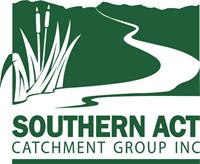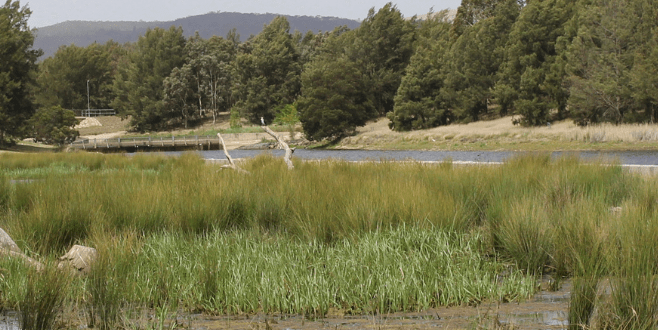Isabella Pond was built in the 1980’s as the surrounding suburbs were being developed as both amenity for local residents and to trap stormwater. It is located on Tuggeranong Creek, which has been converted into a concrete channel as the suburbs have grown and is upstream of Lake Tuggeranong. All the tributaries into Isabella Pond are concrete stormwater drainage channels. Two of the tributaries into the pond have Gross Pollutant Traps, which are preliminary forms of stormwater treatment. Strangers Pond and Upper Strangers Raingarden, also act as preliminary treatment.
Stormwater pollution is a concern for all urban areas. It consists of visible pollution, such as litter and rubbish, and less seen pollution such as sediments, and nutrients including nitrogen and phosphorus. These unseen pollutants can cause algae blooms, disrupt natural ecological processes, and reduce water quality therefore reducing amenity for water users.
 As a part of the Healthy Waterways program, two wetlands were installed into Isabella Pond.
As a part of the Healthy Waterways program, two wetlands were installed into Isabella Pond.
The north wetland has a treatment area of 8,670m3 and a catchment area of 485 ha. The north wetland system consists of a sedimentation basin, inlet, and outlet pools and two intermediary pools located at the stormwater drain discharge points (within the wetlands themselves) which minimize scour of the macrophyte zone. The retaining wall directs flows of up to 1.5m/3 into the wetland with anything over that bypassing the wetland into Isabella Pond. The south wetland has a treatment area of 6,974m3 and a catchment area of 430ha. The system consists of a wetland with an inlet pool, outlet pool and three intermediate pools. Upper Strangers Pond provides pre-treatment and performs the function of a sedimentation basin.
The wetlands work by mimicking natural processes that convert Nitrogen and Phosphorus transported from the surrounding urban environment by the incoming stormwater into other forms. Macrophytes planted around the edge of the wetland help facilitate nutrient removal through providing a home to a biofilm around the roots of plants which contains bacteria which process the nutrients. The plants themselves also use the nutrients to assist growth.
Sediment basins and other design features in the wetlands, utilize gravity to assist with the removal of sediments which provide a vehicle for transportation of nutrients as well as decreasing available light and building up in sensitive areas affecting habitat. The combination of these treatment methods aims to reduce pollution entering Lake Tuggeranong and from there the Murrumbidgee River system.
Waterwatch data has been collected at Isabella Ponds, explore this data here.
Isabella Pond is a thriving ecosystem with many amazing flora and fauna, explore what Canberrans have sighted on Canberra Nature map here.





